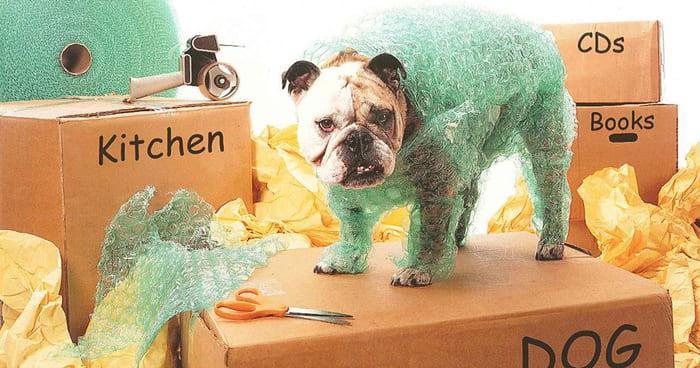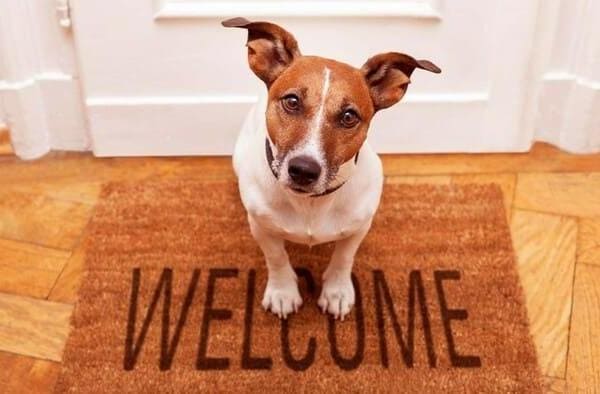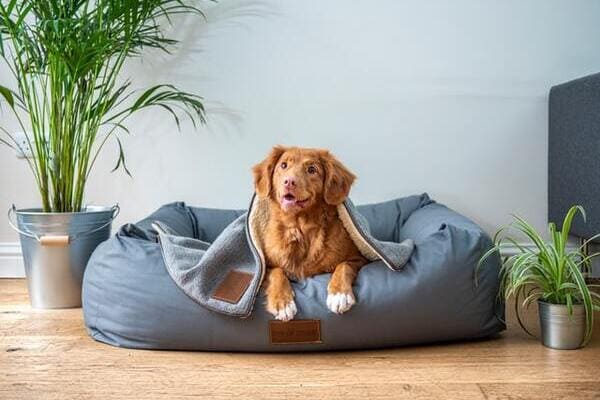How to Move With Pets
It’s common knowledge that moving is one of the top five great stresses in life for people. It’s even more so for pets. For any animal, a predictable routine is a key part of feeling safe. Cats insist on being fed at the same time every day, dogs count on their morning walk, and wait for their owners to get home from work each night. When it comes time to move, disarray affects the routines of the entire household.
The trauma of an ill-planned move can have long-term effects on pets. Accidents in the house, loss of appetite, and aggression are all side effects of stress in a pet. In the worst-case scenario, pets are more likely to run away or get lost on moving day.
Just a little planning will make moving day a breeze for you and your pet.
Start Planning Early

As a lifelong incurable procrastinator, it pains me to say this but; The best way to make moving safe and stress-free for your pet is early planning. Get a moving checklist and stick to it. Start packing early and keep boxes and moving materials out of the room where your pet spends the most time.
If you have access to your new home before moving day, consider bringing your pet over to explore a few times. Moving day won’t randomly place them in a new home, instead it will be some place they’ve already explored. If possible, leave a bed or blanket in the new place for a few days and then bring it home for your pet to use.
If you’re moving to a new city or a new part of the city, contact your vet. Get a copy of records and refill your pet’s prescriptions so you won’t run out as soon as you arrive in your new home.
Your vet can also help you update your pet’s microchip information. When your lost dog or cat is found, the microchip is scanned for information. Current microchip information is the quickest way to get your pet back to you.
For chronically anxious pets, your veterinarian can prescribe medication for moving day so the process isn’t traumatizing. Only your vet can decide if medication is necessary, and it isn’t a replacement for training and preparation.
Arrange For A Distraction On Moving Day

For local moves with active and social dogs, consider signing them up for daycare on moving day. They’re safely playing in a facility while the move takes place and come home tired and relaxed. Before picking dogs up, set up their area with a bed, toys, and bowls, so it feels familiar and homey.
For older and non-social dogs or adventurous cats, ask a friend to babysit for a few hours. In some situations, your pet can spend a few days with a friend while you unpack and organize the house. You know your pet best, and this may not be a workable solution for them. For anxious dogs and cats, being away from their owner for a few days could be more stressful than moving.
Create a Moving Routine

No doubt it’s a mundane task, but write out a schedule for moving day. The times don’t have to be exact, but it’ll establish when you’ll move pets from the old house to the new one. You can strategize what furniture needs to get moved before the pets can go. For example, make sure to move & set up dog beds, kitty condos, and rodent tanks before you move pets.
On moving day, try to maintain pets schedules as much as possible. Feed and walk them at the usual times, so they have the same routine. During long-distance moves, take frequent breaks while driving. Use the breaks to walk dogs, give water to cats and small pets, and give sensitive animals a break from the motion and noise of the road.
Trust Through Training

The most successful training is the one that works within your current routine. Rather than forcing yourself to devote 45 minutes a day to training, take a few minutes in your normal day to practice good moving day habits. A few commands to practice:
- Wait at open doors for permission: pets won’t bolt out doors left open during the move.
- Emergency recall words: if your pet doesn’t reliably come when called, add in a use-in-an-emergency recall word.
- “Place”, “crate”, or “bed” command: don’t force your pet into their travel carrier, train them to feel safe inside it.
Train for the worst situation, when a pet would use the opportunity of an open door to escape. Starting training early into the moving process will also improve your relationship with your dog or cat. They’ll have more trust in you, and will look to you for guidance when they’re uncertain.
Take your Time when You Arrive

There’s an impulse to release pets from their carrier as soon as you arrive, so they can explore and roam in the new house. Don’t think of time in the carrier as imprisonment, but as a safe & cozy space they get to avoid the chaos in. Leave pets in their carriers or in a separate room while you organize and establish order in the rest of the house.
Make their space as similar to the previous home as possible, with their bed, toys, and bowls. Set up litter boxes in their permanent place to avoid any confusion after the move.
Bribery is Fine

No one will have a stress-free day if your dog is compulsively barking or your cat is yowling in the bedroom while movers get the truck loaded.
High-value treats and toys can take your pet's focus away from the stress of the move. Stock up on their favorites and invest a few minutes at a time throughout the day to burn off their nervous energy with play & reward them with a treat.
Moving With Small Animals

Small pets have a hard time with change and stress. Sudden changes in environment can take a toll on their little bodies, causing sickness or death. For both rodents and reptiles, give them a few hours a day in the week leading up to the move to get used to a travel carrier. A few more moving tips:
- Rodents: They need plenty of tank substrate to hide in during the move. Put them in a dark quiet room after the move to recover.
- Reptiles: Be careful to maintain temperature during the move so they don’t get too hot or cold. Large reptiles can travel in dog carriers.
- Fish: Use caution when deciding to move fish a long distance. Save drained aquarium water and slowly re-acclimate them to the tank.
Most important is to make small animals feel secure throughout the move. Secure travel carriers within the car and remove loose toys and structures in the carrier that could slip, fall over, and hurt them.
Moving is More Fun with Your Best Friend
You already know that your pet looks to you to decide how to behave in unfamiliar situations. When you’re calm and confident, your dog feels safe because their pack leader is in charge. Bonus, a leadership attitude will also help when dealing with movers or corralling friends to help you get a sleeper couch down the stairs.
Most of these tips take just a few extra minutes a day but can make all the difference on the day of the move. Preparation allows skittish and shy animals to hide from the most stressful parts of moving. It gives ample time for active pets to burn off their nervous and excited energy. Predictable, comforting routines are maintained with an established plan for moving day. Even better, when you prepare to make moving day relaxing and fun for your furry best friend, you’ll find that the ordeal goes a lot easier for you, too.
Related Posts
By accepting you will be accessing a service provided by a third-party external to https://www.movinglabor.com/